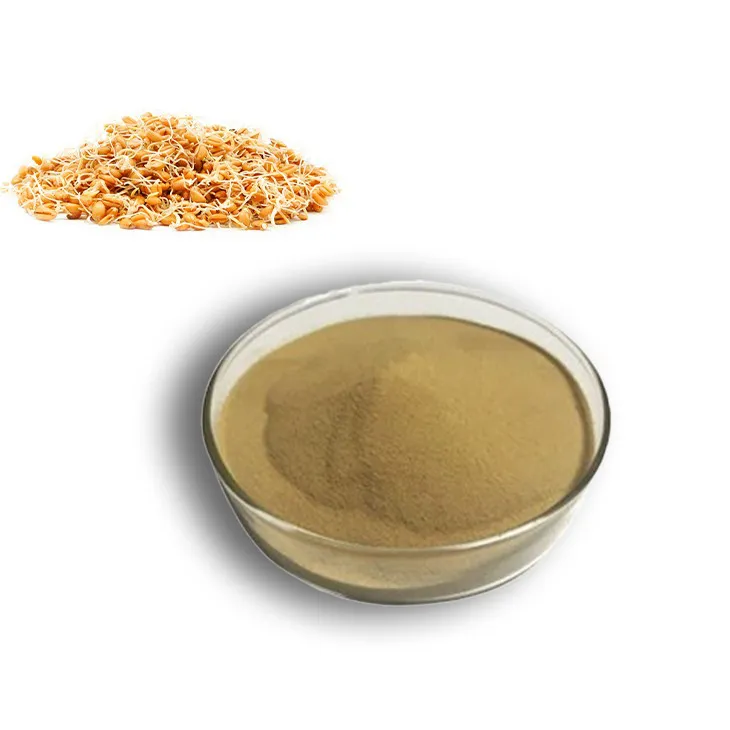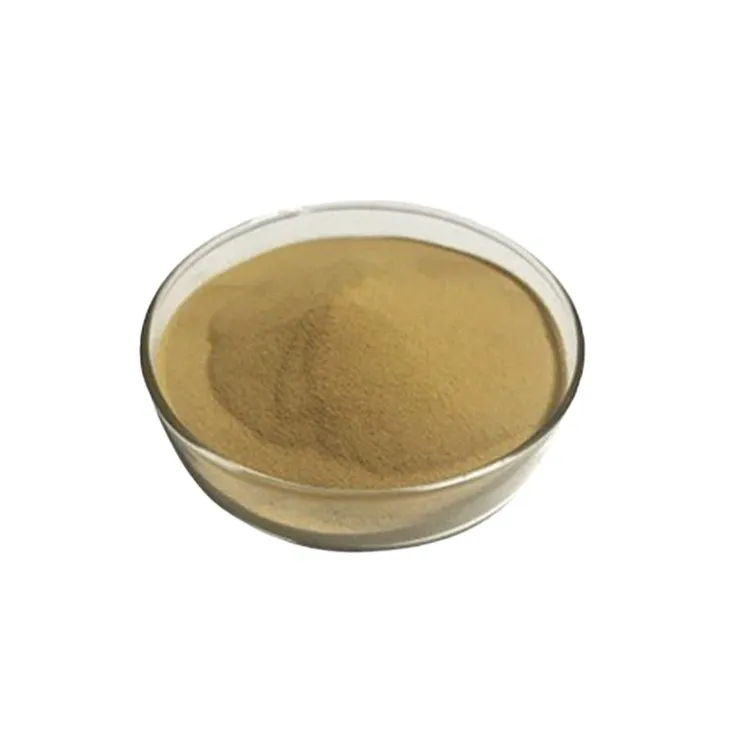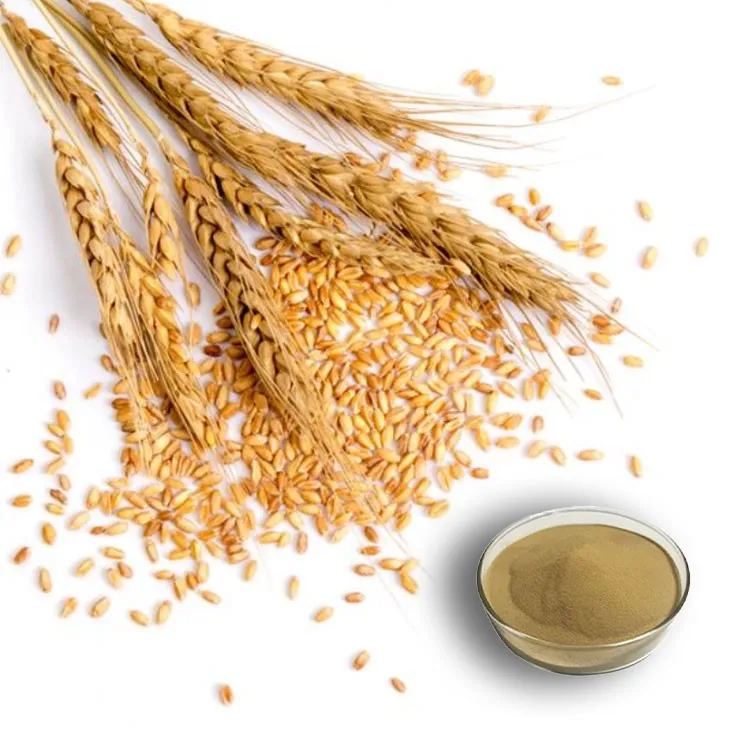- 0086-571-85302990
- sales@greenskybio.com
How to extract wheat germ extract from plants?
2024-11-29

1. Introduction to Wheat Germ
Wheat germ is a highly nutritious part of the wheat kernel. It is rich in various bioactive compounds, vitamins (such as vitamin E), minerals, and essential fatty acids. Due to its numerous health - promoting properties, the extraction of Wheat Germ Extract has become an important process in many industries, including the food, pharmaceutical, and cosmetic industries.

2. Source and Selection of Wheat Germ
2.1 Source
Wheat germ is obtained from wheat kernels. It is a small but concentrated source of nutrients. In commercial production, wheat germ is usually separated during the milling process of wheat. However, not all wheat germ is suitable for extraction.
2.2 Selection
High - quality wheat germ should be clean, free from contaminants such as dirt, stones, and other impurities. It should also be fresh, as stale or oxidized wheat germ may have reduced levels of bioactive compounds. The selection process may involve visual inspection, as well as laboratory tests to determine the quality and purity of the wheat germ.

3. Chemical Methods of Extraction
3.1 Solvent Extraction
Solvent extraction is one of the most common chemical methods used to obtain Wheat Germ Extract.
- The choice of solvent is crucial. Hexane is often used as a non - polar solvent. It is effective in dissolving lipids and fat - soluble components present in the wheat germ. The process involves mixing the wheat germ with hexane in a suitable ratio. For example, a common ratio could be 1:5 (wheat germ to hexane by weight). The mixture is then stirred thoroughly for a specific period, usually several hours, to ensure complete extraction of the desired components.
- Another solvent that can be used is ethanol. Ethanol is a polar solvent and is more suitable for extracting polar compounds such as certain vitamins and polyphenols. When using ethanol, different concentrations can be employed depending on the target compounds. For example, a 70% ethanol solution may be used for extracting water - soluble vitamins along with some phenolic compounds. The extraction process with ethanol also involves mixing the wheat germ with the solvent, followed by agitation and incubation at a specific temperature, typically around room temperature or slightly higher.
3.2 Enzyme - Assisted Extraction
Enzymes can also be used to enhance the extraction process.
- For example, cellulase and hemicellulase enzymes can be added to the wheat germ - solvent mixture. These enzymes break down the cell walls of the wheat germ, which helps in releasing the intracellular components more easily. The use of enzymes can increase the yield of the extraction. The enzymes are usually added in small amounts, typically in the range of 0.1 - 1% of the weight of the wheat germ. After adding the enzymes, the mixture is incubated at a specific temperature and pH for a certain period. For cellulase and hemicellulase, the optimal temperature may be around 40 - 50°C, and the pH may be in the range of 4.5 - 5.5.

4. Physical Methods of Extraction
4.1 Filtration
Filtration is an essential physical method used for purifying the Wheat Germ Extract obtained through chemical extraction.
- After the chemical extraction process, the mixture of wheat germ extract and solvent (along with any undissolved particles) is passed through a filter. There are different types of filters that can be used. Filter paper is a simple and commonly used option for initial filtration. It can remove larger particles such as pieces of undissolved wheat germ. For more precise filtration, membrane filters can be employed. These filters have a specific pore size, which can be selected according to the size of the particles to be removed. For example, a membrane filter with a pore size of 0.2 - 0.45 μm can be used to remove fine particles and microorganisms.
4.2 Centrifugation
Centrifugation is another important physical method.
- Centrifugation is used to separate the components of the extract based on their density differences. The extract - solvent mixture is placed in a centrifuge tube and spun at a high speed. For example, a typical centrifuge speed could be 3000 - 5000 rpm (revolutions per minute). During centrifugation, the heavier particles such as cell debris and insoluble substances are forced to the bottom of the centrifuge tube, while the supernatant, which contains the wheat germ extract, can be carefully decanted or pipetted out for further processing.

5. Purification and Concentration of the Extract
5.1 Purification
In addition to filtration and centrifugation, other purification methods may be required.
- Column chromatography can be used to further purify the wheat germ extract. Different types of columns, such as silica gel columns or ion - exchange columns, can be employed depending on the nature of the compounds to be purified. For example, if the goal is to separate different types of lipids, a silica gel column can be used. The extract is loaded onto the column, and different solvents or solvent mixtures are used to elute the components based on their affinity for the column material.
- Ultrafiltration is another purification method. It uses membranes with a specific molecular weight cut - off to separate the components of the extract. This method is useful for removing small - molecular - weight impurities or concentrating the desired components. For example, if the target is to obtain a high - concentration of a particular protein in the wheat germ extract, an ultrafiltration membrane with a suitable molecular weight cut - off can be selected.
5.2 Concentration
Concentration of the wheat germ extract is often necessary to obtain a product with a higher concentration of active ingredients.
- Evaporation is a common method for concentration. The extract can be heated gently under reduced pressure to evaporate the solvent. Rotary evaporators are often used for this purpose. By controlling the temperature and pressure, the solvent can be removed gradually, leaving behind a more concentrated wheat germ extract.
- Freeze - drying or lyophilization is another option for concentration. In this process, the extract is frozen first, and then the water or solvent is removed by sublimation under vacuum. This method is particularly useful for heat - sensitive components in the wheat germ extract as it minimizes the exposure to high temperatures.
6. Quality Control and Analysis of the Extract
6.1 Quality Control
Quality control is essential to ensure the safety and effectiveness of the wheat germ extract.
- Microbial testing is carried out to check for the presence of harmful microorganisms such as bacteria, yeast, and molds. Samples of the extract are cultured on specific media, and the growth of microorganisms is monitored. If the microbial count exceeds the acceptable limits, the extract may need to be further processed or discarded.
- Heavy metal analysis is also important. Wheat germ may accumulate heavy metals from the soil during growth. Common heavy metals such as lead, mercury, and cadmium are tested using techniques such as atomic absorption spectrometry. If the levels of heavy metals are above the regulatory limits, the wheat germ source may need to be changed or the extract may need to be treated to reduce the heavy metal content.
6.2 Analysis of Active Compounds
To determine the quality and potency of the wheat germ extract, analysis of the active compounds is necessary.
- Chromatographic techniques such as high - performance liquid chromatography (HPLC) are used to analyze the composition of the extract. HPLC can separate and quantify different components such as vitamins, fatty acids, and polyphenols present in the wheat germ extract. By comparing the chromatographic profiles with known standards, the concentration and purity of the active compounds can be determined.
- Spectroscopic techniques such as ultraviolet - visible (UV - Vis) spectroscopy can also be used. UV - Vis spectroscopy can provide information about the presence of certain functional groups in the extract. For example, the presence of conjugated double bonds in vitamins and polyphenols can be detected by their characteristic absorption in the UV - Vis region.
7. Conclusion
The extraction of wheat germ extract from plants is a complex process that involves a combination of chemical and physical methods. Starting from the careful selection of high - quality wheat germ, through various extraction, purification, and concentration steps, and finally quality control and analysis, each stage is crucial in obtaining a high - quality wheat germ extract. The understanding and optimization of these processes are essential for industries that rely on wheat germ extract for the production of food, pharmaceutical, and cosmetic products.
FAQ:
What are the common solvents used in the chemical extraction of wheat germ extract?
Common solvents may include ethanol. Ethanol is often used because it can effectively dissolve many of the active substances in wheat germ while being relatively safe and easy to handle in industrial processes. Another possible solvent could be hexane, which is good at extracting lipid - related components from wheat germ. However, the choice of solvent depends on the specific target substances to be extracted and the requirements of subsequent purification steps.
Why are filtration and centrifugation important in the extraction of wheat germ extract?
Filtration is important because it can remove large particles and impurities from the extract. For example, it can separate out undissolved solids such as bran fragments or other insoluble materials present in the initial wheat germ - solvent mixture. Centrifugation, on the other hand, is used to separate substances based on their density differences. It helps in separating the extract from denser or lighter impurities, and also in separating different components within the extract that have different densities, thus purifying the wheat germ extract.
How can one ensure the quality of the starting wheat germ for extraction?
To ensure the quality of the starting wheat germ, first, it should be sourced from reliable suppliers. The wheat should be of good quality, free from mold, pests, and excessive contaminants. Before extraction, the wheat germ can be carefully inspected visually for any signs of damage or spoilage. It can also be tested for its nutrient content and purity. Additionally, proper storage conditions, such as cool, dry, and dark places, are essential to maintain the quality of the wheat germ until it is used for extraction.
What are the potential applications of wheat germ extract?
Wheat germ extract has various potential applications. In the food industry, it can be used as a nutritional supplement due to its rich content of vitamins (such as vitamin E), minerals, and healthy fats. In the cosmetic industry, it can be added to skincare products as it may have antioxidant properties that can help in protecting the skin from damage. In the pharmaceutical industry, it may be explored for its potential health - promoting properties, such as anti - inflammatory or immune - boosting effects.
Are there any environmental considerations in the extraction of wheat germ extract?
Yes, there are environmental considerations. When using solvents like hexane in the extraction process, proper handling and disposal are crucial as hexane is a volatile organic compound (VOC) and can be harmful to the environment if released. The waste generated during filtration and centrifugation also needs to be disposed of properly to avoid pollution. Additionally, the energy consumption in the extraction process, especially in physical methods such as centrifugation, should be minimized to reduce the overall environmental impact.
Related literature
- The Science of Wheat Germ Extraction and Its Nutritional Significance"
- "Advanced Techniques in Wheat Germ Extract Production"
- "Wheat Germ Extract: From Plant to Product - A Comprehensive Review"
- ▶ Hesperidin
- ▶ Citrus Bioflavonoids
- ▶ Plant Extract
- ▶ lycopene
- ▶ Diosmin
- ▶ Grape seed extract
- ▶ Sea buckthorn Juice Powder
- ▶ Fruit Juice Powder
- ▶ Hops Extract
- ▶ Artichoke Extract
- ▶ Mushroom extract
- ▶ Astaxanthin
- ▶ Green Tea Extract
- ▶ Curcumin
- ▶ Horse Chestnut Extract
- ▶ Other Product
- ▶ Boswellia Serrata Extract
- ▶ Resveratrol
- ▶ Marigold Extract
- ▶ Grape Leaf Extract
- ▶ New Product
- ▶ Aminolevulinic acid
- ▶ Cranberry Extract
- ▶ Red Yeast Rice
- ▶ Red Wine Extract
-
Sophora Flavescens Root Extract
2024-11-29
-
Elderberry Extract
2024-11-29
-
Withania Somnifera Extract
2024-11-29
-
Kelp Extract Powder
2024-11-29
-
White Willow Bark Extract
2024-11-29
-
Tongkat Ali Extract Powder
2024-11-29
-
White mustard seed extract
2024-11-29
-
Peppermint Oil
2024-11-29
-
Honeysuckle Pollen
2024-11-29
-
Lemon Juice Powder
2024-11-29





















